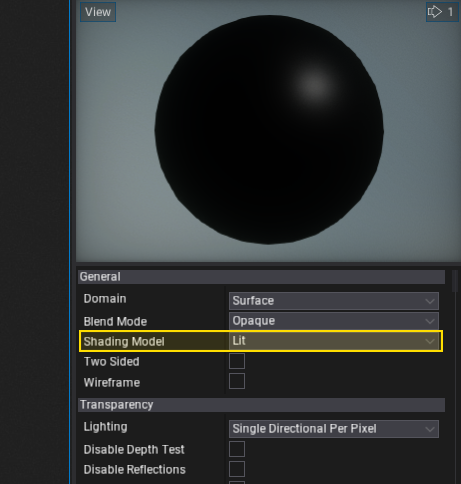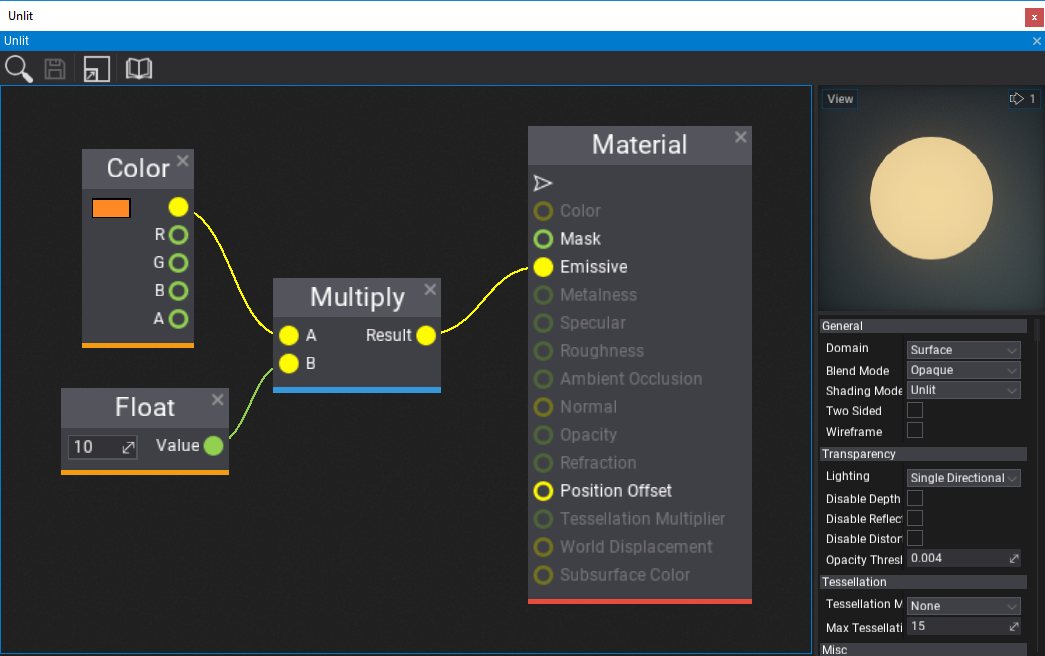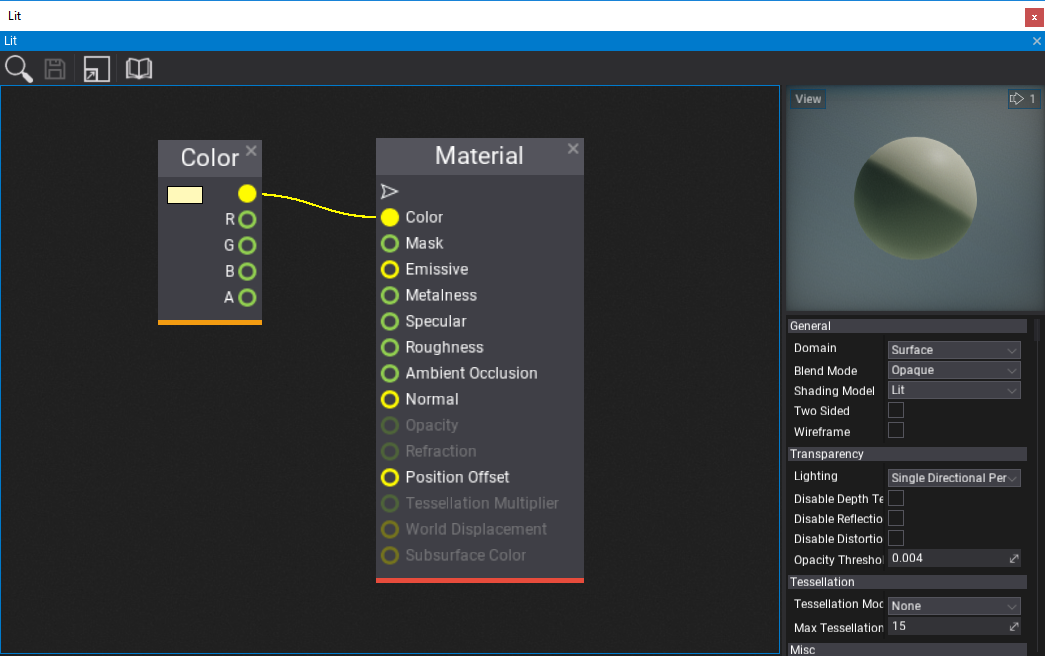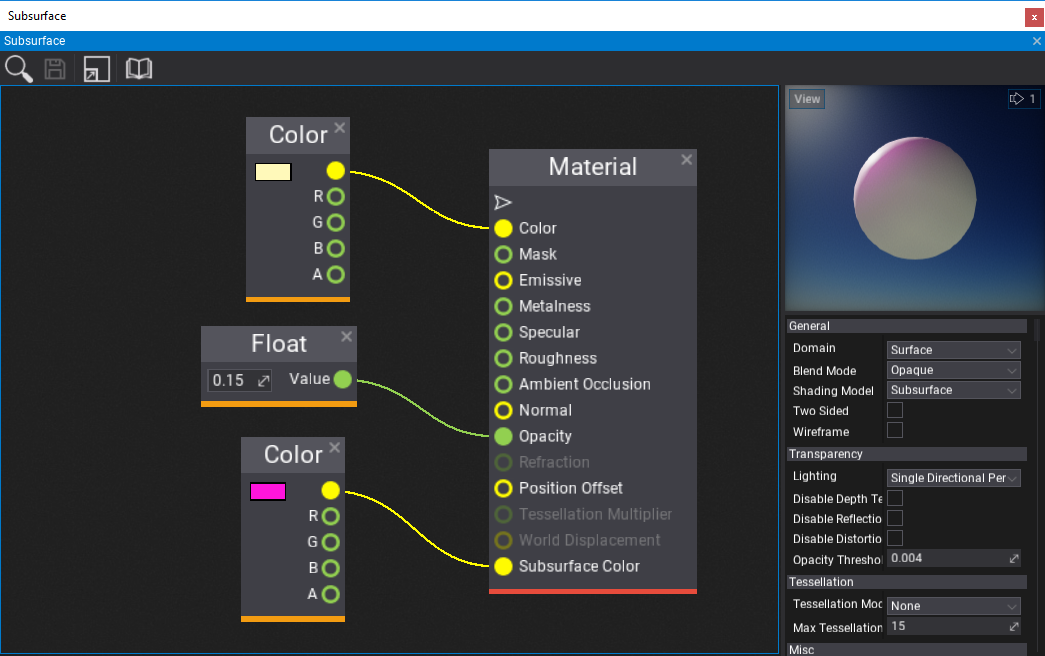Shading Models
Flax supports various Shading Models that can be used by different game objects to achive a desired look. The most common choice is the Lit material type (set as default). Use this page to learn more about using other shading models and how to use them in your game.
The material shading model can be changed in the Material Properties.

Unlit
The unlit material does not use a shading algorithm and all lights or reflections are ignored by this material. An unlit material uses the emissive channel as an output color. It can be used to perform custom lighting operations or just glow. It won't be affected by the lighting pipeline.

Lit
The default lit material is the most common choice for material surfaces. It can be used to define plastic, wood, metalic or glass surfaces. By using the Roughness, Ambient Occlusion and Specular inputs you can define the microsurface properties used by the BRDF shading function.

Subsurface
The Subsurface shading model is intended to be used by materials like skin, jade, wax or foliage. It works similar to Lit, except it supports light scattering through the material. This can be controlled by the Subsurface Color input which defines the color of the material's internal volume and the Opacity input that describes the material's local thickness (value 1 means fully opaque, value 0 means light can easily pass through). The default opacity value is 1, which does not result in a very convincing effect. Use values closer to 0 to give more transparency for light scattering (eg. 0.1).

Foliage
The Foliage shading model is similar to Subsurface except it's made directly for foliage surfaces such as leaves and brushes that are usually thinner.
Custom Lit
Custom Lit shading model provides whole lighting information within a shader and allows implementing custom shading. It has access to the scene lights data during both GBuffer and Forward pass rendering, thus it can be used to implement Cel Shading.
